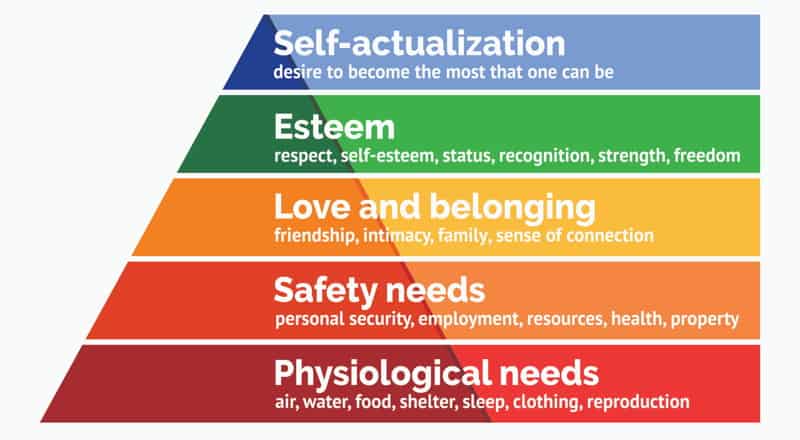Table of Contents
Meaning and Types of Motives
Man’s behaviour, and even that of other animals, cannot be mechanically analyzed. By examining the motives driving particular behaviours, the behaviour could then be understood. There are a few of the driving forces or factors that continue to encourage and influence behaviour in people. While some of these motivations are learned or acquired through education and other social experiences, others are unique to the individual or inborn. The reasons or motivations, the motive behind a particular behaviour, need an adequate explanation in order to understand the terms of human behaviour properly.

Meaning Of Motive
Etymologically, the word “motivation” comes from the Latin word “motive,” which is also the foundation of words like “motion” and “motor.” It refers to exerting pressure or inspiration. Therefore, from a psychological perspective, the term “motive” refers to the power that initiates and sustains an action. It is that thoughtfulness or condition that facilitates an organism to react in a certain way. The definitions that follow will assist in elaborating on the meaning of motive:
According to Professor J.P. Guilford, “A Motive’ is any particular internal factor or condition that tends to initiate and sustain activity.
The process of starting, maintaining, and guiding an organism’s activity is referred to as motivation. It is possible to imagine that many motivated actions start out of a need.
Mac Dougall defined motives as “physiological and psychological environments within the organism that predispose it to act in a particular way.”
The definitions above highlight the fact that motive is the idea that serves as the foundation for generalizing human behaviour. It is that factor or circumstance that drives an individual to behave in a certain way, or it is the driving force behind or inspiration for a specific action or behaviour. In other words, motives or motivations are those elements that continue to affect how people act and behave in relation to a specific objective or purpose. For instance, when someone is hungry, they will act differently to find food. Until food is obtained and hunger is satisfied, such actions or behaviours will continue
Therefore, from a psychological perspective, motives or motivation have the following three characteristics:
- It causes activity in an organism to begin or be prompted.
- The activity is motivated or compelled within.
- The activity keeps going until there is a change or the goal is achieved.
We can interpret motives from behaviour to explain and predict behaviour. Therefore, it is impossible to directly examine motives. They are conclusions we make based on the outcome behaviour. If our motive interpretations are accurate, we can utilize them to properly explain behaviour and the motivation underlying it.
Relationship Between Incentive And Motives
Incentive
The external, visible item or objective that motivates actions or behaviours is known as an incentive. For instance, when someone is hungry, “food,” which is required to pacify the hunger, becomes the motivator or incentive for such behaviours.
Positive and negative incentives were differentiated by Professor B. Kuppuswomy in 1982. Incentives, according to him, are positive when they encourage behaviour and negative when they prevent it.
The words “need” and “motive” describe a lack of something. The majority of human behaviours are driven by either psycho-social or physiological wants such as sleep, shelter, hunger and including those for recognition, praise, social acceptability, etc.
Types Of Motives
Different psychologists from various perspectives have assigned various motive classifications.But generally speaking, the major classes are the primary and secondary motives which is how psychologists most often categorize motives. However, because it is more straightforward and incorporates all other types of classification, the current discussion will be centered on both primary and secondary classification.
1. Primary Motives
Biological or physiological factors of the organism that are required for the survival of the organism or keeping the processes of bodily functions in a balanced state are considered primary motives. The most significant primary motives include those related to hunger, thirst, pain aversion, the need for oxygen, a desire for sleep, the need to excrete wastes, and the control of body temperature. Primary motivations are natural. They are more genetic or common to all humans.
2. Secondary or Learned Motives
These are the motivations that are picked up through social interaction and learning within socio-cultural groupings. They are necessary for people to adjust psychosocially to their environments.
They support the main goals and occasionally aid in their modification. The need for achievement or the drive to succeed in reaching high-performance standards, the need for acclaim and recognition from others, the need to rule over or exert authority over others, and other such needs are examples of secondary reasons. The desires for work, curiosity, exploration, manipulation, connection to others, etc. are also included in this list of secondary motives. These purposes help to activate the nervous system while also giving the organism useful information about its surroundings. This may help to explain why Dennis Coon (1986) divided them up into different categories under “Stimulus Motives.”
Motivation Theory of Abraham Maslow
Maslow, who lived from 1908 to 1970, made an effort to develop a systematic theory of motive based on the demands of the organism in his 1954 book, “Motivation and Personality.” His main theory is that a person is neither merely a biological creature nor an empty body waiting to be filled by its surroundings.
He mentions a hierarchy of needs at different levels that drive organisms to take action. Before the organism may function at a higher level, in his opinion, the more basic level of demands must be at least moderately met.
1. According to Maslow, the physiological needs of hunger, thirst, and temperature control, as well as the wants for activity, sleep, and relaxation, make up the most fundamental level of motivation. The only time the organism can function at a higher level, according to him, is when these needs are somewhat met.
2. The safety needs, which are centered on the need for a predictable and orderly world, are at the next level. Lack of safety causes people to feel insecure, and some of these people may engage in various antisocial behaviors that are harmful to the system or to society as a whole. The prevalence of minor crimes aimed at obtaining personal ways to survive in most emerging nations, including Nigeria, where there are desperate fears of political, economic, and psycho-social insecurity, should come as no surprise.
3. Following the satisfaction of one’s physiological and safety requirements, according to Maslow, comes the need for love and belonging. The person is now driven to seek out affectionate relationships with others and wants to belong to a larger community in order to give and receive love. The demand for respect or esteem need is found at level four, where the person strives for success and competence, freedom, individual liberty, reputation and prestige, and acceptance.
4. The desire for esteem and recognition can be so depraved to the point of losing its true value based on the cultural and moral values of the parties involved. This is now the case in Nigeria, where communities and churches confer chieftaincy titles and honor upon criminals and other anti-social individuals after receiving significant financial and material donations to such organizations.
5. According to Maslow, the need for self-actualization emerges after the other four levels of needs have all been adequately met. According to Maslow, self-actualization is based on the full realization of a person’s potentialities made possible by giving him the chance to do so. Maslow listed the following traits of people who have achieved self-actualization:
- They accept one another and themselves for who they are.
- They have a good sense of humour.
- They care about other people’s welfare.
- They are creative.
- They have an objective perspective on life and are problem-centred rather than self-centred, among ten other qualities. He listed people who had achieved self-actualization in American society, including Eleanor Roosevelt, Albert Einstein, and Abraham Lincoln.
The need to understand and know things comes next, and according to Maslow, some people have more intense and observable needs in this area than others. People who are driven by the need for knowledge and understanding are naturally curious and have the propensity to explore and learn more without looking for additional compensation. According to Maslow, these people also tend to organize, analyze, and seek out better relationships.
The “AESTHETIC NEEDS” level, which includes the desire for beauty and beautiful environment, is the highest level in Maslow’s hierarchy of needs. The pursuit of high spiritual height and consciousness, as well as a love for truth, perfection, and justice, go hand in hand with these demands.
The expanded hierarchy of needs
Notably, Maslow’s (1943, 1954) five-stage model has been modified to incorporate cognitive and aesthetic needs (Maslow, 1970a), as well as subsequent transcendence needs.
A seven-stage model and an eight-stage model, both created in the 1960s and 1970s, are two modifications to the initial five-stage model that are highlighted.

1. Physiological needs
Biological and physiological demands, such as those for air, food, water, shelter, warmth, sleep, and other things.
2. Safety needs
Protection from the vices, security, order, law, stability, and lack of fear are all requirements for safety.
3. Love and belonging needs
Needs for affection and love, including companionship, intimacy, trust, and acceptance as well as receiving and providing love. joining, belonging to a group
4. Esteem needs
Maslow divided esteem needs into two groups:
- esteem for oneself; dignity, achievement, mastery, independence and
- the need to be embraced and respected by others.
5. Cognitive needs
Cognitive demands, include the need for understanding and information, curiosity, investigation, and predictability.
6. Aesthetic needs
Needs for beauty, balance, form, and other aesthetic qualities.
7. Self-actualization needs
Needs for self-actualization, include self-fulfilment, personal progress, and relatively high experiences. the goal of “being whatever one is capable of becoming” (Maslow, 1987, p. 64).
8. Transcendence needs
Needs for transcendence – People are driven by values that go beyond the individuality, such as spiritual experiences, specific natural experiences, aesthetic experiences, sexual experiences, helping others, the quest of knowledge, religious faith, and many more
Criticism Of Maslow’s Theory
• The core problem with maslow’s theory, according to its critics, is the way certain subjective concepts like “frame of reference” and “Self-actualization,” etc., are overgeneralized. The critics pointed out that such irrational beliefs were difficult to empirically or scientifically examine and prove. They said that because some people can choose to forego some basic needs in order to achieve greater success, Maslow could not demonstrate that human needs are rigidly structured in such a hierarchical order.
• A very critical examination of the theory reveals that it lacks global cultural validity. This is true because people’s levels of aspirations and potential are determined by their culture, value system, and standards. For instance, in Nigeria and other less developed nations in Africa, those who proclaim their desire for the aesthetic level of need the loudest—and even the majority of those who pretend to have obtained it—are actually driven by their terror of the unknown and their fear of the future doom (both material and psychological).
• According to Maslow’s hierarchy of needs, only Nelson Mandela of South Africa and possibly Kofi Annan of Ghana can be considered self-actualization individuals in Africa.
• Despite the aforementioned criticisms, the theory does contain some important truths about what motivates human behavior. Maslow asserts that until a person’s basic wants are sufficiently met, they will continue to scout for those basic needs. The subsequent needs in the hierarchy subsequently come to light and start to gain their attention.



